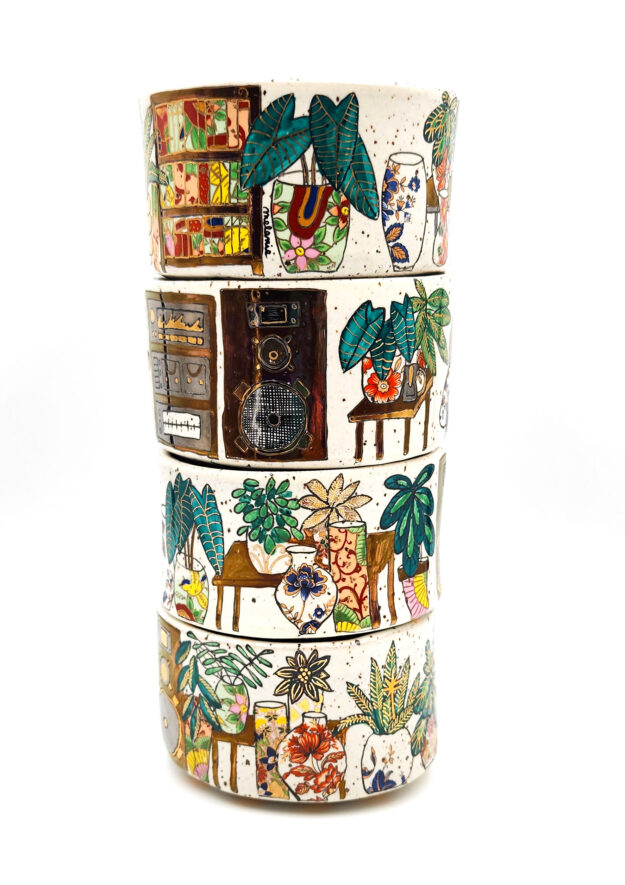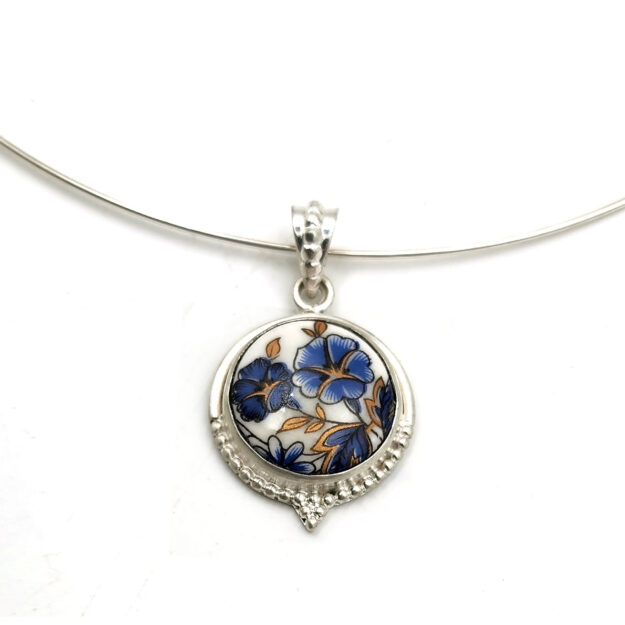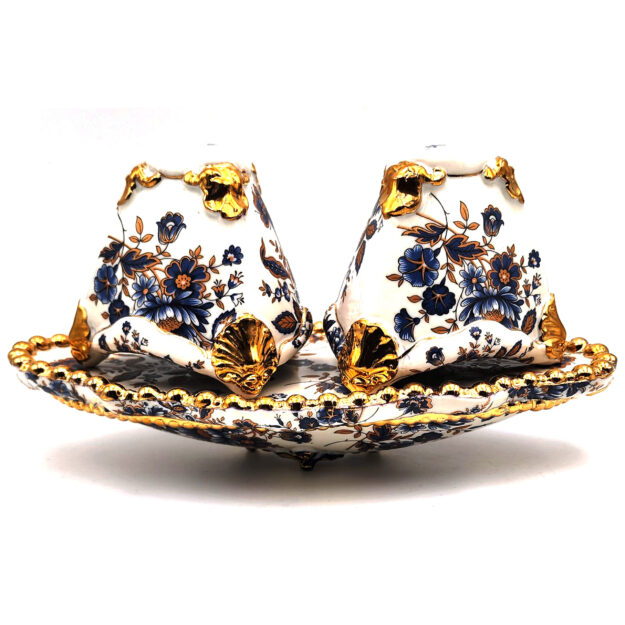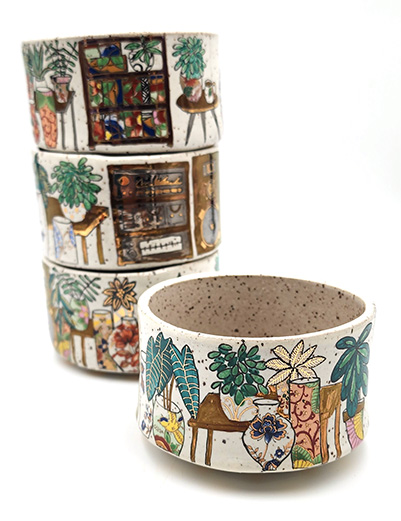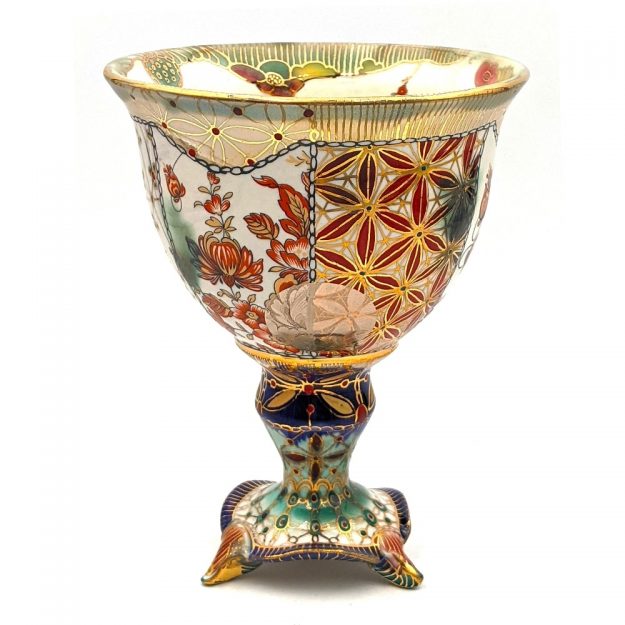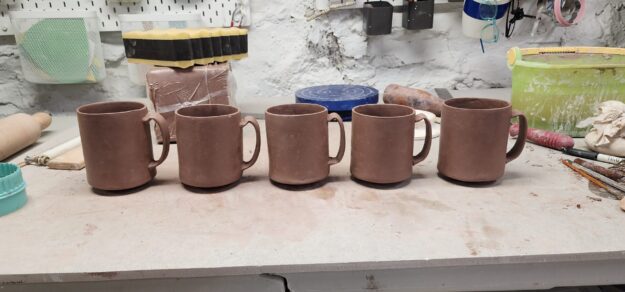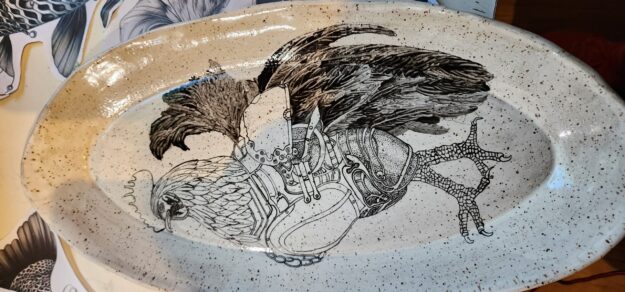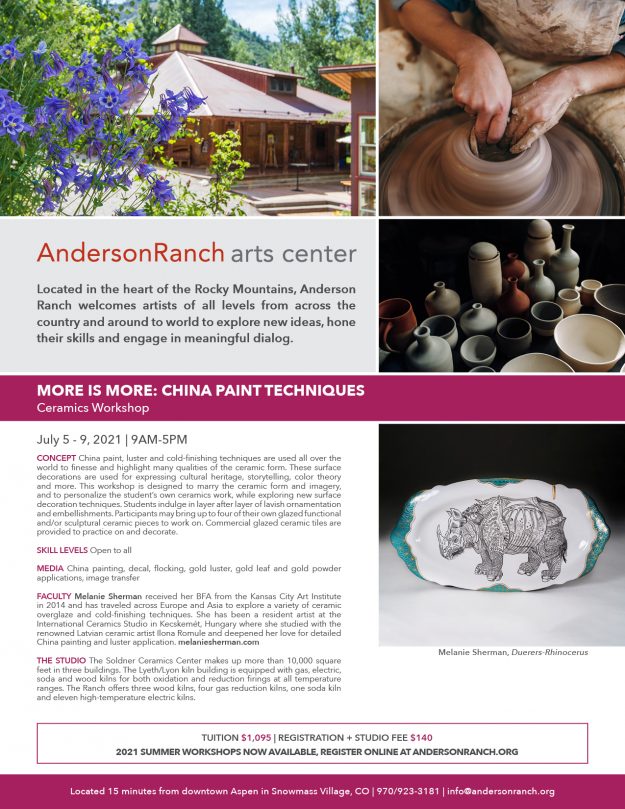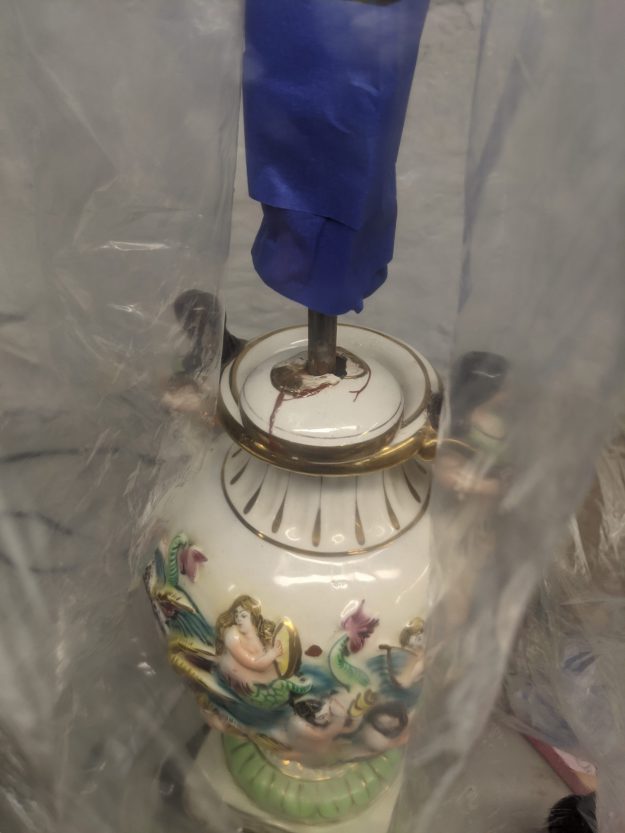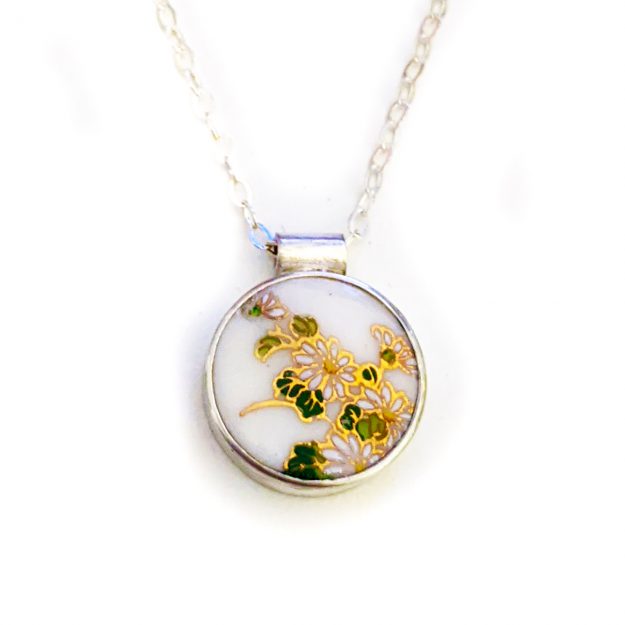Clay, a malleable earth material that has been molded into various forms for centuries, holds an intrinsic charm. Among its many variations, speckled clay stands out as a testament to the Earth’s diverse creativity. The subtle yet captivating allure of speckled clay lies in its unique appearance, the processes that give rise to its distinctive patterns, and its significance in the realm of art and craft.
“Ceramic artist and china painter Melanie Sherman creates beautiful sterling silver jewelry pieces with porcelain stones. Decorated with vintage decals from Europe and Asia, these one-of-kind pieces tell the story of historic porcelain wares, used as dinnerware in 18thCentury.”
Porcelain, a material that embodies sophistication and delicate craftsmanship, captivates hearts with its ethereal beauty and enduring appeal. This exquisite ceramic, renowned for its luminous translucency and refined textures, showcases the harmonious convergence of natural elements and human artistry, creating a symphony of elegance that has enraptured connoisseurs for centuries.
In the realm of artistic expression and geological marvels, speckled clay emerges as a mesmerizing fusion of nature’s ingenuity and human craftsmanship. This distinct variant of clay, characterized by its scattered particles, evokes a sense of wonder through its unique appearance, intricate formation processes, and profound significance in the world of art and crafts.
“Kiddush” Following an ancient custom from the days when wayfarers and the poor lodged in synagogues, some congregations recite the Kiddush at the end of the Friday evening service in the synagogue—except on the eve of Passover (Pesaḥ), when the recitation is reserved for the seder service. The Kiddush that is recited after the morning…
In the realm of design and creation, the art of building complex forms using templates emerges as a versatile and ingenious approach. This method, which hinges on the synthesis of structure and creativity, enables designers, architects, and craftsmen to transform intricate ideas into tangible realities. The process encompasses the utilization of templates, precision engineering, innovation, and practicality, resulting in marvels that encapsulate the fusion of human ingenuity and technical prowess.
China painting, a venerable art form that has flourished across cultures and epochs, stands as a testament to the human capacity to transform the ordinary into the extraordinary. This delicate technique, which involves hand-painting intricate designs on porcelain surfaces, marries technical skill with boundless creativity. Rooted in both cultural traditions and artistic evolution, china painting embodies a timeless journey that interweaves history, aesthetics, and individual expression.
More is More: China Paint TechniquesJuly 5-9, 2021 Concept: China paint, luster, and cold-finishing techniques are used all over the world to finesse and highlight many qualities of the ceramic form. These surface decorations are used for expressing cultural heritage, storytelling, color theory and more. This workshop is designed to marry the ceramic form and…
Located in the heart of the Rocky Mountains, Anderson Ranch welcomes artists of all levels from across the country and around the world to explore new ideas, hone their skills and engage in meaningful dialog.
A brief history of Kintsugi The Kintsugi technique originated under Ashigaka Yoshimasa (1435-1490) during the Muromachi period. Yoshimasa liked surrounding himself with artists and poets in his temple-palace Ginkaku-ji and it was him who gave birth to the cha no yu culture, the tea ceremony, in Japan. When one day his precious cup, which is…
Patterns and styles evolved, and by the late 15th century arrangements were common enough to be appreciated by ordinary people and not only by the imperial family and its retainers. Ikebana, in the beginning, was very simple, constructed from only a very few stems of flowers and evergreen branches. This first form of ikebana is…

